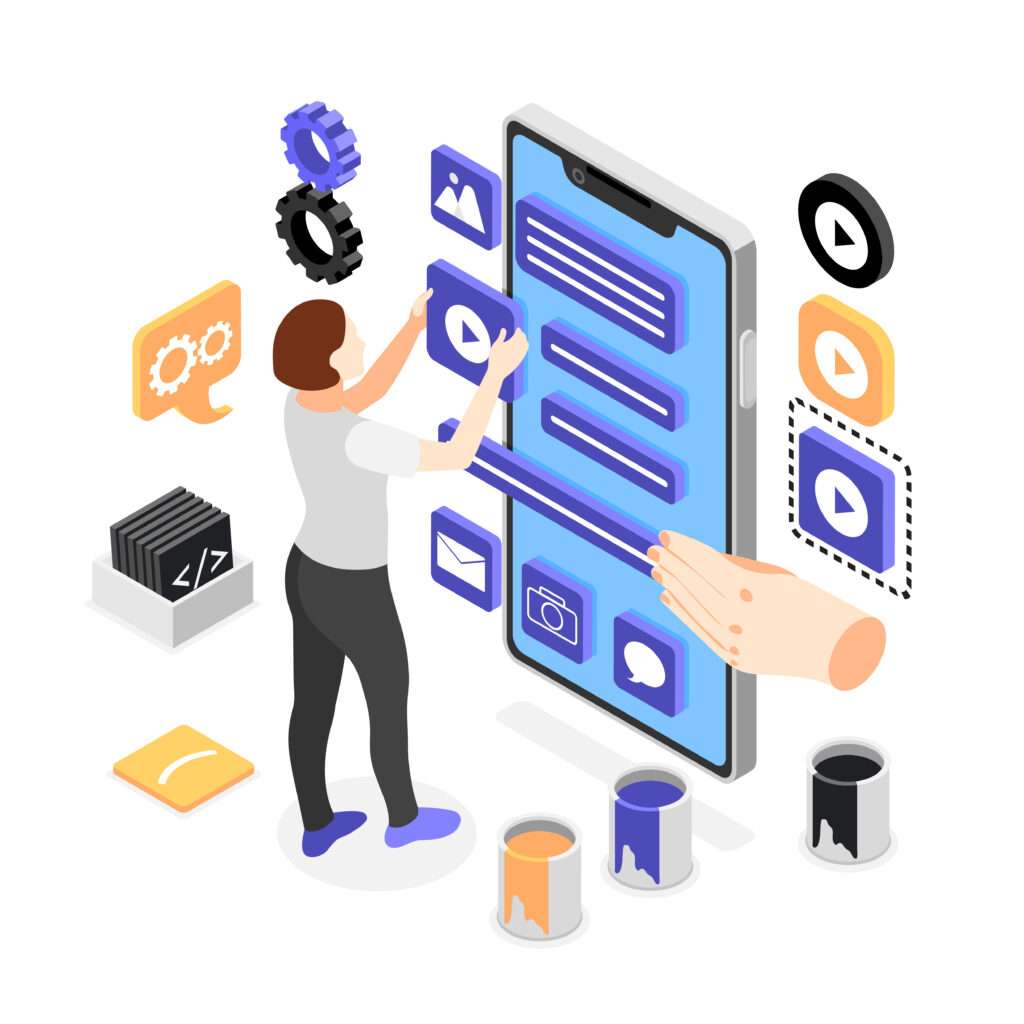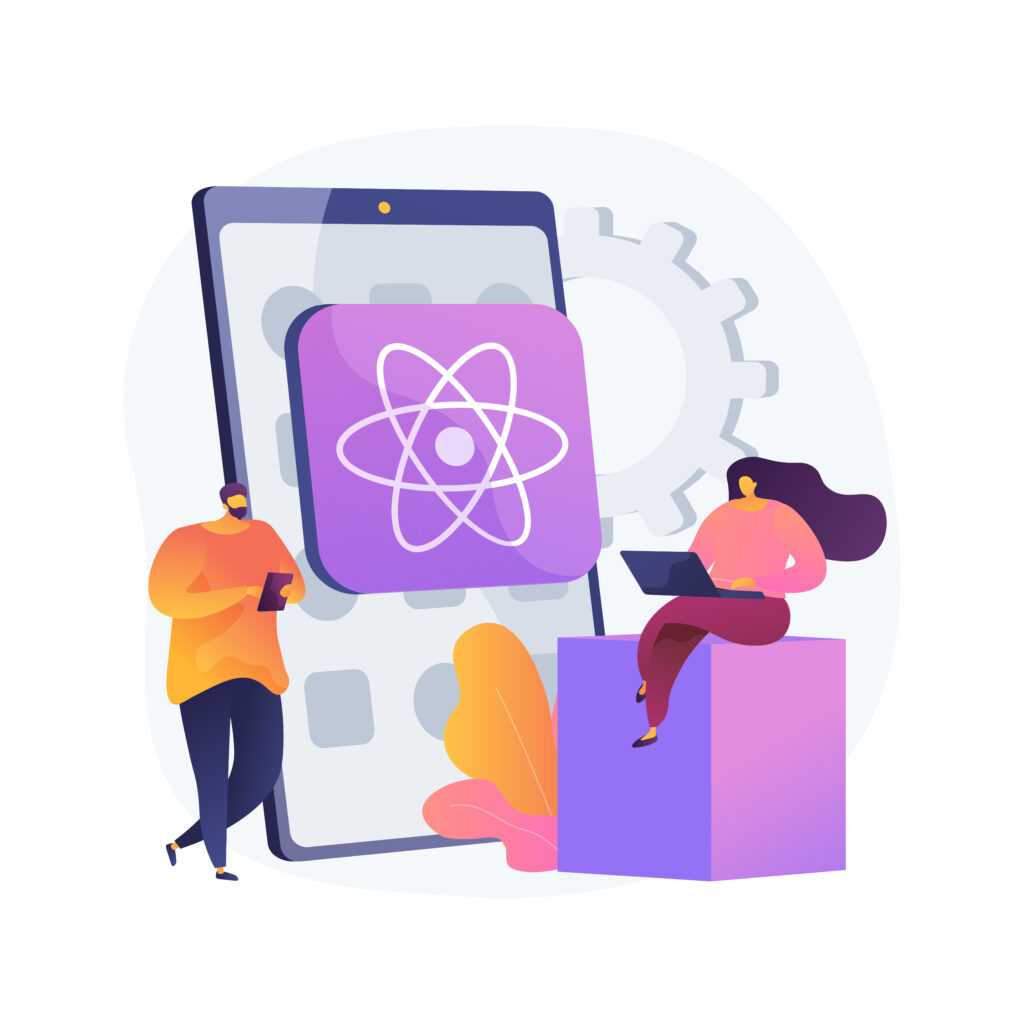Are you struggling to decide which framework is the right choice for your project? Worried that making the wrong decision could cost you valuable time and money? You’re not alone. The choice you need to make around frameworks is a critical one, and a misstep here can limit your application’s scalability and lead to maintenance nightmares down the road. In this fast-paced digital landscape, it’s essential to make the right choice from the start to ensure your project’s success.
At Mallow our clients have approached us many times with the very same dilemma. Our commitment to guiding our clients through this decision-making process and providing them with informed, feasible solutions has become our hallmark. That has led to our clients returning to us, project after project, trusting in our expertise and dedication to their success.
Though we specialise in the Flutter framework, we recognize that React Native is a great framework for many applications. And in this article, we’re going to do our best to compare them honestly in several categories, so you can make the right choice for you.
By reading this article, you will get a thorough exploration of the pros and cons associated with each framework, along with the knowledge that you need to make an informed decision about which path aligns best with your specific project requirements.
When you should and shouldn’t opt for Flutter? And why?
Flutter is a versatile open-source framework for building natively compiled applications. Developed by Google, it has gained rapid popularity in the mobile application development landscape. What sets Flutter apart is its ability to create stunning, high-performance applications for various platforms, including iOS, Android, web, and even desktop, using a single codebase.

Flutter’s key strength lies in its widget-based architecture, which empowers developers to craft beautiful and consistent user interfaces with ease. The framework’s hot reload feature accelerates the development process, allowing for real-time code changes and instant previews. Flutter is an ideal choice for projects demanding cross-platform compatibility, a polished user experience, and efficient development, making it a top contender in the world of mobile application development.
When you should opt for Flutter?
-
- Cross-platform development – If you aim to develop an application for both iOS and Android platforms simultaneously, Flutter’s cross-platform capabilities shine. It allows you to write code once and run it on multiple platforms, saving time and effort.
-
- Reusable components – Flutter boasts a robust, reusable component feature, enabling developers to create widgets and UI elements that can be easily shared and utilised across different application parts, promoting code efficiency and consistency.
-
- Consistent User Interface – Flutter’s widget-based architecture ensures a consistent and visually appealing user interface across different devices and platforms. This can be crucial if maintaining a uniform brand image is a priority for your application.
-
- Complex and Custom UI – When your application requires a complex or highly customised user interface, Flutter provides the flexibility and control you need. Its extensive widget library and customisation options make it a suitable choice for such projects.
-
- Performance and Speed – Flutter’s compiled code offers impressive performance, with near-native speeds. If your application demands high performance, especially for graphics-intensive applications or games, Flutter can meet those requirements.
-
- Rapid development – Flutter’s hot reload feature allows developers to see the immediate impact of code changes, speeding up the development process. It’s beneficial for iterative development and quick prototyping.
-
- Interaction with native components – Flutter provides plugins and packages to access native device features and APIs, ensuring you can integrate hardware-specific functionalities seamlessly into your application.
-
- Interaction with Native code -In Flutter, interaction with native code is facilitated through platform channels, enabling developers to seamlessly integrate native functionality by passing messages between Dart and platform-specific code (Java/Kotlin for Android, Objective-C/Swift for iOS). This allows for deep integration with device-specific features while maintaining a unified codebase.
-
- Community and Support – Flutter benefits from a growing and active community, which means you’ll find plenty of resources, plugins, and community-driven solutions to common challenges.
When you shouldn’t opt for Flutter?

-
- Smaller community support – While Flutter has a growing community, it may not be as extensive as some other development frameworks since it is a newly developed framework, leading to potentially fewer resources and solutions available for developers.
-
- Availability of the expertise – Since Flutter is a blooming framework the availability of expertise in the framework could slightly be difficult.
-
- Limited availability of Development APIs – Flutter might lack some specialised or platform-specific APIs that are readily available in native development environments, which could limit certain functionality in your applications.
When you should and shouldn’t opt for React Native? And why?
React Native is a popular open-source framework for mobile application development that has gained significant traction in recent years. Developed by Facebook, React Native allows developers to build high-quality, native-like mobile applications using JavaScript and React. Businesses increasingly turn to React Native app development services to take advantage of its “write once, run anywhere” philosophy, which enables developers to use a single codebase for both iOS and Android platforms. This approach not only streamlines development but also ensures a consistent user experience across different devices.
A React Native app development company typically takes advantage of the framework’s vibrant and active community, along with the extensive ecosystem of third-party libraries and plugins. They make it a powerful and flexible tool for creating cross-platform mobile applications with speed and efficiency. Its ability to deliver near-native performance and a smooth user interface has made it a top choice for businesses and developers seeking a cost-effective and agile solution for mobile application development.
When you should opt for React Native?

-
- Faster development – If you’re aiming to develop your app quickly and need to meet tight deadlines, React Native’s “write once, run anywhere” approach can save you significant development time. It allows you to use a single codebase for both iOS and Android, reducing the need for separate development teams.
-
- Cost-effective – React Native can be a cost-effective solution as it reduces the development and maintenance overhead associated with building separate apps for iOS and Android. You can achieve a native-like experience with a smaller budget.
-
- Large community and ecosystem –
React Native benefits from a vast and active community of developers. Partnering with a React Native development company gives you access to a wealth of open-source libraries, plugins, and resources, helping to speed up development and simplify troubleshooting.
- Large community and ecosystem –
-
- Smooth user interface – React Native offers near-native performance and provides a smooth and responsive user interface. It supports animations and transitions, ensuring that your app feels and behaves like a native one.
-
- Reusable components – React Native allows you to reuse components across different parts of your app or in multiple apps. This reusability can further expedite development and improve consistency.
-
- Hybrid applications –
If the project involves complex requirements for both web and mobile platforms, opting for React Native development services is a compelling choice, as React Native seamlessly integrates web views and existing web code into your mobile application, streamlining both development and maintenance.
- Hybrid applications –
When you shouldn’t opt for React Native?
-
- Performance – React Native apps can sometimes experience performance bottlenecks, particularly for complex animations or heavy computational tasks, as they rely on a bridge to communicate with native components, something a React Native app development company must often account for, potentially introducing latency.
-
- UI and UX – Achieving a truly native look and feel in React Native apps may require additional effort and customization, which can be challenging and time-consuming.
-
- Slower support to latest features – React Native applications may experience delays in incorporating the latest platform-specific features or updates, as they depend on the React Native community and core team for implementation.
-
- More dependency on third-party or open source libraries – React Native often relies on third-party libraries to access certain native functionality, which can introduce additional complexities and potential compatibility issues when integrating with these external dependencies.
Choosing between Flutter and React Native
Comparing the application development process

When faced with the pivotal decision of choosing between two distinct frameworks like Flutter and React Native, it is essential to approach the evaluation process with diligence. The criteria that fall under application development must be assessed thoroughly, as they lay the foundation for the success of your project. Factors such as codebase reusability, platform support, development speed, debugging capabilities, integration with native modules, and cost considerations all play pivotal roles in shaping the outcome of your application.
Here’s a table comparing Flutter and React Native based on some crucial evaluation criteria:
| Evaluation Criteria | Flutter | React Native |
| Single-code Base Development | Flutter wins. It offers true code-sharing, allowing you to use a single codebase for both iOS and Android, resulting in consistent application behaviour and easier maintenance. | React Native also supports code sharing, but it may require more platform-specific code, impacting the level of code reusability. |
| Platform Support | It’s strong on both iOS and Android. Flutter consistently offers timely updates to match the latest native platform features. | React Native supports both platforms but might occasionally lag behind in adopting the latest platform features. |
| Development time | Flutter excels in faster development as it contains a lot of built-in features and libraries, allowing you to take your application to the market quickly. | In the case of React Native, you have to research a lot to find open source libraries as you won’t find options available built-in. |
| Tooling and Debugging | Flutter’s extensive set of tools like Dart DevTools provides excellent debugging capabilities, making it easier to identify and fix issues. | React Native offers decent tooling, but debugging can be more challenging due to the bridge connecting JavaScript and native code. |
| Integration with Native components | Flutter tends to have dedicated plugins to communicate with the native components. | React Native offers a vast library of third-party native modules, simplifying integration with native functionality. |
| Cost and Budget | Flutter is cost-effective for businesses as it reduces development and maintenance costs by sharing a single codebase across platforms. | React Native is also budget-friendly but might require additional effort in handling platform-specific issues. |
Please note: The best-suited framework in each category may vary depending on the specific project requirements and priorities. Flutter generally excels in code sharing, development speed, and tooling, while React Native offers a broader selection of third-party modules and easier integration with native modules. The choice between the two should align with your project’s specific needs and constraints.
Evaluating frameworks based on performance and scalability
| Flutter | React Native |
|
|
Key Takeaway
Well, both Flutter and React Native offer good performance, with Flutter having a slight edge due to its use of Dart and native compilation. For scalability, Flutter’s widget-based architecture and state management options and provide a robust foundation for building scalable applications. At the same time, React Native’s extensive library of third-party modules can aid in handling scalability and requirements but may require additional optimisation efforts as the project scales. The choice between the two should align with your specific performance and scalability needs.
Evaluating both frameworks from a security standpoint
The table below will give you an overview of how Flutter and React Native frameworks weigh in terms of security:
| Flutter | React Native |
|
|
How do the frameworks compare by their communities?
Here’s a comparative analysis of Flutter and React Native based on the evaluation criteria of Community and Third-Party Support and Long-Term Maintenance and Support, with a focus on famous applications built with each framework:
| Evaluating Criteria | Flutter | React Native |
| Community and third-party support |
Flutter has a rapidly growing and enthusiastic community of developers. It benefits from Google’s backing, which ensures continuous support and updates. The community has contributed a variety of open-source packages and plugins to extend Flutter’s functionality. It’s worth noting that the number of third-party packages in Flutter’s ecosystem is still smaller compared to React Native’s. |
React Native boasts one of the largest and most active communities in the mobile application development world. It has a vast repository of third-party libraries and plugins, thanks to its long-standing presence and support from Facebook. The extensive community support means you can often find solutions to common problems and access a wide range of pre-built components. |
| Long-Term maintenance and support |
Flutter offers a robust and well-documented framework, and Google’s ongoing commitment ensures long-term support. The clear versioning and upgrade path provides confidence in the framework’s stability. Notable applications built with Flutter include Alibaba, Google Ads, and Tencent Now.Check out this piece of detail from Github on how the road map of flutter looks like. |
React Native has been around for a longer time, and it has been used in numerous high-profile applications. Facebook, Instagram, and Airbnb are among the famous applications built with React Native. Check out this detail from github to know more details about how the roadmap for React native looks like. |
Key Takeaway:
Both Flutter and React Native have thriving communities and third-party support, but React Native’s longer presence in the market has resulted in a more extensive ecosystem of third-party packages. When it comes to long-term maintenance and support, both frameworks have a track record of commitment, with famous applications vouching for their reliability. Ultimately, the choice between Flutter and React Native should consider your project’s specific needs and priorities.
Comparing the frameworks based on their roadmap plans
Flutter and React Native have distinct approaches to their roadmap planning. Flutter, backed by Google, is known for its transparent and well-documented roadmap. Google actively maintains and updates Flutter, and they provides a clear timeline for upcoming features and improvements. This transparency and commitment to the framework’s development make Flutter a reliable choice for long-term projects.
On the other hand, React Native, developed and maintained by Facebook, also offers a roadmap but may not be as detailed or as frequently updated as Flutter’s. React Native’s roadmap tends to focus on broader goals, and specific features and timelines might be less explicit. However, React Native benefits from a vast community of contributors who continually work on enhancing the framework, ensuring its continued evolution.
| Aspect | Flutter | React Native |
| Development team | Google provides a clear and transparent roadmap, outlining upcoming features and improvements. | Facebook and the React Native community offer a roadmap, but it may be less detailed and frequently updated. |
| Maintenance | Google’s commitment to Flutter ensures long-term maintenance and support. | React Native’s longevity and strong community of contributors contribute to its long-term viability. |
| Updates | Frequent updates and feature releases are common in Flutter, aligning with the roadmap. | Updates are released regularly, but the roadmap may focus on broader goals rather than specific features. |
| Transparency | Flutter’s roadmap is known for its transparency and accessibility to developers. | React Native’s roadmap might be less explicit, with a stronger emphasis on community contributions. |
Key Takeaway:
Flutter’s roadmap planning is characterised by transparency, frequent updates, and strong support from Google, making it a reliable choice for projects requiring clear direction. React Native benefits from a robust community and continuous development but might have a roadmap that is less detailed and more community-driven. The choice between the two should consider the project’s long-term needs and the level of detail required in the roadmap.
Flutter vs. React Native: choosing the right framework for your application
Here’s a table comparing Flutter and React Native based on the specified criteria:
| Criteria | Flutter | React Native | Winner |
| Performance | Excellent | Good | Flutter |
| Adaptability to the ecosystem | Limited | Seamless | React Native |
| Community support | Growing | Vast and Established | React Native |
| Architecture | Widget-based | Component-based | Tie |
| Installation | Relatively simple | Can be complex | Flutter |
| UI and UX | Customisable widgets | Native components | Flutter |
| Availability of Development APIs | Limited | Rich ecosystem | React Native |
| Development time | In-built widgets | More dependent on open-source libraries | Flutter (for some) |
| Code reusability | High | Moderate | Flutter |
| Quality assurance | Strong debugging | Can be challenging | Flutter |
| Release | Frequent updates | Frequent updates | Tie |
| Application development rates | Cost-effective | Less cost-effective comparatively | Flutter |
It’s important to note that the “winner” may vary depending on the specific project requirements and priorities. Both Flutter and React Native have their strengths and weaknesses, and the choice should align with your project’s unique needs.
Key factors to consider when selecting a framework
✅ Define your application’s objectives and requirements. Consider the complexity of your application and its intended audience.
✅Determine if your application needs to run on both iOS and Android platforms.
✅Consider the performance requirements of your application, especially if it involves resource-intensive tasks or high graphics.
✅ Determine whether you require a highly customised UI (Flutter) or can work with native components (React Native).
✅ List any third-party integrations or specific native modules you need for your application.
✅ Determine the importance of code reusability in your project.
✅ Assess the availability of third-party libraries, plugins, and community support for both Flutter and React Native.
✅ Consider your plans for long-term app maintenance and updates.
✅ Think about your testing strategy and the ease of testing in both frameworks.
✅ Analyse your budget constraints and which framework aligns better with your financial resources.
✅Research famous applications built with both Flutter and React Native to see if they align with your project’s goals.
✅Consider the framework’s roadmap and whether it aligns with your app’s future needs.
How to hire an application development team?
After finalising your choice of framework for your application, the next critical step is selecting the ideal team for its development. Handling the hiring process for your application development team is a critical endeavor. To ensure success, start by defining clear job roles and responsibilities, considering the specific skills and expertise required for your project.
Create detailed job descriptions and conduct thorough interviews to assess candidates’ technical skills, problem-solving abilities, and cultural fit within your organisation. Don’t underestimate the importance of checking references and verifying past work experiences. Consider practical assessments or coding tests to gauge candidates’ practical skills.
Check out this article on how to hire the right application development team to get more insights on how you can handle the hiring process of your application development team efficiently.
Still, confused about your next step? Feel free to reach out to our team.
Your queries, our answers
Mobile application development involves creating software applications designed to run on mobile devices like smartphones and tablets. These apps can be native (built specifically for iOS or Android), cross-platform (designed to work on multiple platforms), or hybrid (combining elements of both).
Our mobile app development process includes the following stages: requirement gathering and analysis, design and prototyping, development and coding, testing and quality assurance, deployment, and post-launch support. Each stage is crucial to delivering a high-quality application.
To gain deeper insights into the experience of working on a mobile project with Mallow, explore more details here.
The choice between native and cross-platform development depends on your project’s goals, budget, and target audience. Native apps offer better performance and a more tailored user experience, while cross-platform apps allow for faster development and lower costs by using a single codebase for multiple platforms. For a detailed comparison of Native vs. Hybrid development, explore our comprehensive analysis to help you make an informed choice.
Mallow develops mobile apps for iOS, Android, and cross-platform solutions. We use the latest technologies and frameworks to ensure your app performs optimally on the platforms that matter most to your users.
Choosing the right features for your mobile app depends on understanding your target audience, business goals, and budget. We work closely with you to prioritize features that will provide the most value to your users and align with your business objectives.
At Mallow, we offer ongoing app maintenance and updates as part of our post-launch services. This includes regular updates to improve performance, add new features, and ensure compatibility with the latest operating systems. For more details, get in touch with our team.
Yes, Mallow assists with the entire app store submission process, including meeting the guidelines for Apple’s App Store and Google Play. We ensure your app is ready for submission and provide support to help it get approved.
Mallow uses a variety of technologies and frameworks for mobile app development, including Swift and Objective-C for iOS, Kotlin and Java for Android, and React Native and Flutter for cross-platform development. Our technology choices are driven by the specific needs of your project.
Our testing process includes functional testing, performance testing, security testing, usability testing, and compatibility testing across different devices and operating systems. We ensure your app is bug-free and performs optimally before it goes live.
The cost of developing a mobile app depends on several factors, including the app’s complexity, features, platform (iOS, Android, or both), and the development team’s expertise. Costs can range from $10,000 to $150,000 or more. To know more, check out how much it costs to work on a mobile project with us.
The development timeline for a mobile app varies depending on the complexity of the project. A basic app may take 2-4 months to develop, while a more complex app with advanced features can take 6-12 months or longer.
Choosing the right features for your mobile app depends on understanding your target audience, business goals, and budget. We work closely with you to prioritize features that will provide the most value to your users and align with your business objectives.
Yes, Mallow offers comprehensive post-launch support, including monitoring, updates, bug fixes, and enhancements. We ensure your app remains up-to-date and continues to perform well after it’s launched.
A mobile app can enhance customer engagement, increase brand visibility, provide better service through personalized experiences, and create new revenue streams. It also allows you to reach a broader audience by making your services more accessible on mobile devices.
Getting started with Mallow is easy! Simply reach out to us to discuss your project. We’ll work with you to understand your goals, define your requirements, and create a development plan that meets your needs. Let’s bring your mobile app idea to life!.
Security is a top priority at Mallow. We implement advanced security measures, including encryption, secure authentication, and regular security audits, to protect your app from potential threats and ensure data integrity.
To learn more about how we handle and implement these security measures, check out more details here.
Author
Yogesh Murugesh
Yogesh is an accomplished Senior Technical Lead at Mallow, boasting over 11 years of invaluable expertise in the realm of application development. With an extensive background spanning diverse domains, he has consistently delivered applications of the highest calibre. Yogesh's commitment to quality and excellence shines through in every project he undertakes. His career journey is marked by a proven track record of successfully crafting applications that not only meet but often exceed industry standards. His ability to navigate through various domains showcases his adaptability and keen problem-solving skills. Yogesh's contributions have consistently played a pivotal role in driving technological innovation and advancement within his field. Beyond his professional pursuits, Yogesh finds solace and joy in various activities. An ardent cricket enthusiast, he embraces the team spirit and strategic thinking that the sport demands. During leisure moments, he indulges in watching movies, allowing himself to be captivated by different narratives and genres. Moreover, Yogesh cherishes quality time with his child, relishing the role of a devoted parent.



